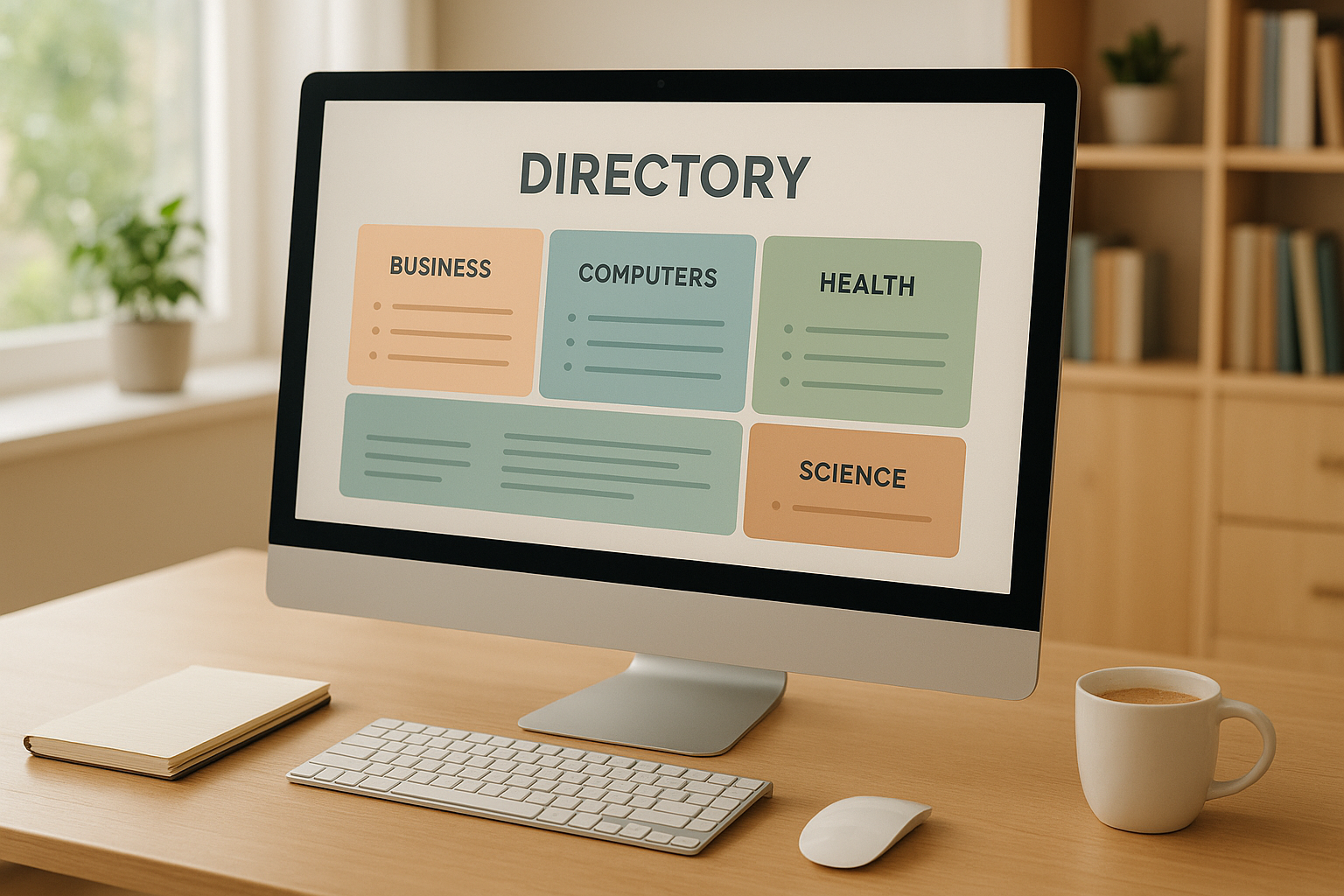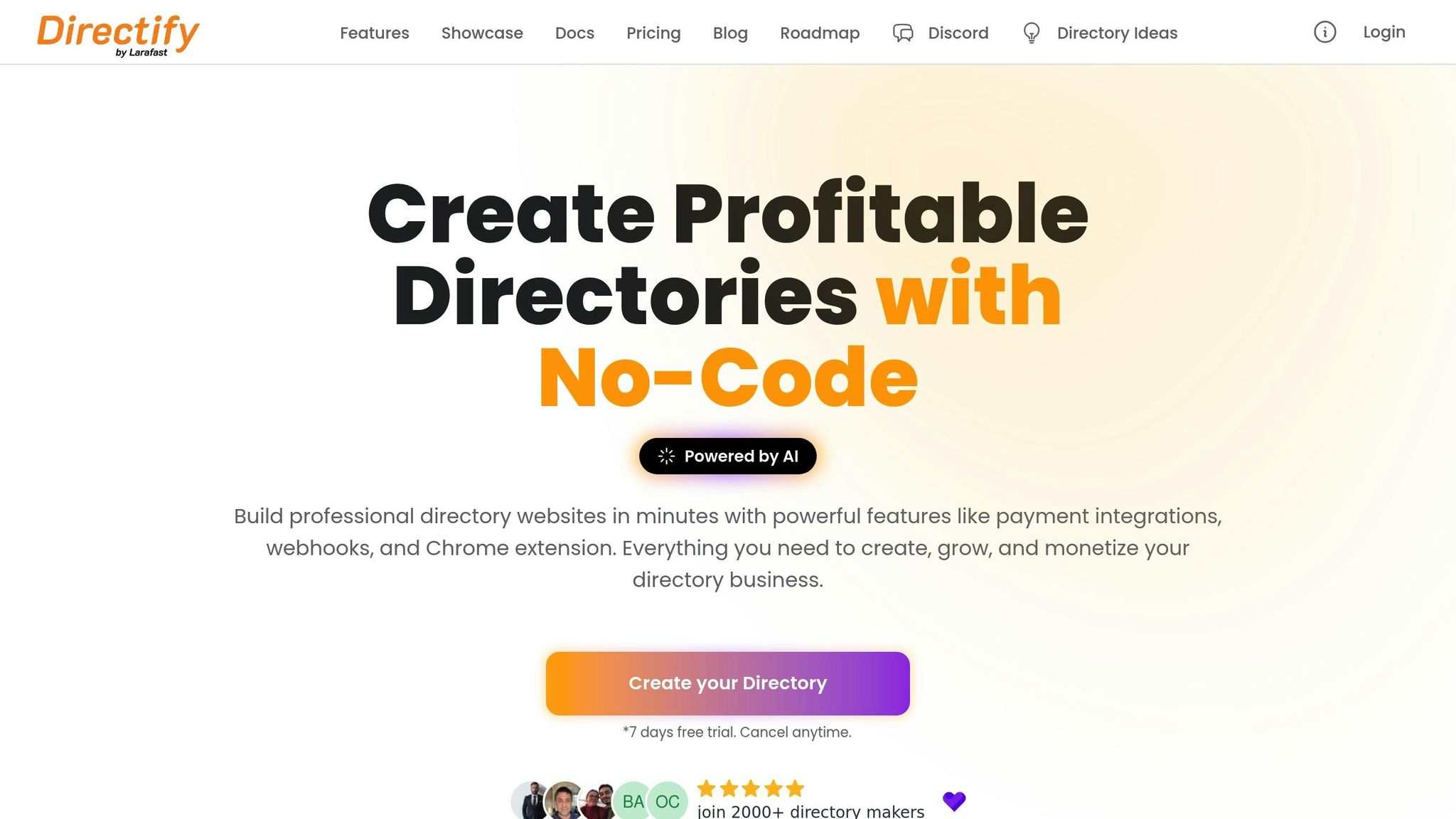
Organizing directory content effectively is crucial for improving user experience and boosting engagement. Here’s what you need to know:
Why Categorization Matters:
Common Problems:
How to Fix It:
Key Tools:
Start with clear, user-focused categories, maintain consistency, and regularly refine your structure for a directory that’s easy to navigate and effective.
A well-structured directory system is essential for making information easy to find and use. Poor organization can frustrate users and hinder access to important content [1]. Let’s dive into the key principles that can help align directory structures with user needs and behaviors.
Most users rely on specific search queries to find what they need [2]. To create a directory that works seamlessly, you should organize content based on common search intents:
| Search Intent Type | Purpose | Example Categories |
|---|---|---|
| Navigational | Finding specific resources | Location directories, Contact information |
| Informational | Learning about topics | Guides, How-to articles |
| Transactional | Making purchases or taking actions | Product listings, Service providers |
| Commercial | Comparing options | Reviews, Price comparisons |
By understanding these different intents, you can ensure your directory structure aligns with how users naturally search for information.
The way you structure your categories directly affects how easily users can navigate your content. Many organizations face challenges like inconsistent naming, which can lead to confusion and inefficiency [1]. Here’s how to approach category complexity:
Category names should be straightforward and instantly understandable. Avoid using internal jargon, technical terms, or overly clever labels that might confuse users [4]. Instead, focus on clarity:
For example, instead of vague terms like "Resources", opt for something more specific such as "Forms and Documents" [3]. Here’s how better naming can make a difference:
| Poor Category Name | Better Alternative | Reason |
|---|---|---|
| Solutions | Business Services | More specific and clear |
| Resources | Training Materials | Directly describes the content |
| Info Center | Help & Support | User-friendly terminology |
Clear and familiar category names make it easier for users to navigate and find what they need. These principles create a strong foundation for managing directories effectively, setting the stage for further customization and refinement.
Set up an effective category system by designing a structure that can grow alongside your content and remains user-friendly.
Build a clear hierarchy by starting with broad categories and breaking them down into more specific subcategories.
Start with broad parent categories
Begin with 5–7 primary categories that align with your directory's main focus areas. For instance, a business directory could include:
| Main Category | Example Subcategories |
|---|---|
| Professional Services | Legal, Accounting, Consulting |
| Retail & Shopping | Clothing, Electronics, Home Goods |
| Food & Dining | Restaurants, Cafes, Catering |
| Health & Wellness | Medical Clinics, Fitness Centers, Spas |
Create specific subcategories
Expand each main category with subcategories that help users find what they need more easily.
Maintain uniform depth
Ensure all category paths are balanced in their levels, so navigation feels consistent and intuitive.
Once your hierarchy is set, introducing strong filtering options will further improve user navigation.
Filters make it easier for users to find exactly what they’re looking for, improving their experience and increasing conversions [5].
Here are some key filter types to consider:
| Filter Category | Purpose | Example Options |
|---|---|---|
| Location | Narrow by geography | City, State, ZIP code |
| Price Range | Filter by budget | Under $50, $50–$200, $200+ |
| Rating | Highlight quality | 4+ stars, 3+ stars |
| Features | Focus on attributes | Open Now, Online Booking, Free Shipping |
To make filters more effective:
Filters combined with a well-planned category structure create a smooth browsing experience.
Keeping your categories up-to-date is essential for maintaining relevance and usability.
Monitor usage patterns
Pay attention to which categories get the most traffic and where users might struggle to navigate.
Conduct regular audits
Perform quarterly reviews to:
Use data for improvements
"Good category management requires continuous monitoring and improvement with a focus on data-driven insights and supplier relationship management." – CommerceIQ [6]
Analyze key metrics like:
With tools like Directify’s category management features, you can make these updates without needing technical skills. The platform’s flexible setup ensures your directory remains organized, SEO-friendly, and easy to navigate as it grows.
Effective category management is the backbone of a well-structured directory. It’s about more than just organization; it’s a way to gain a competitive edge. With modern no-code directory builder tools, creating and maintaining an organized directory has never been easier. Let’s dive into how Directify simplifies category setup, design, and SEO to boost your directory's performance.
Directify offers a range of tools to streamline the process of organizing your categories. Here’s how it helps:
| Feature | Benefit |
|---|---|
| Drag-and-Drop Tool | Easily arrange and nest categories |
| Bulk Category Import | Import categories directly from Google Sheets integration |
| Custom Fields | Add specific attributes to each category |
| Icon Integration | Use icons to make navigation more intuitive |
These features make it simple to focus on what matters most: organizing your content effectively.
A well-designed category structure is key to improving user experience and helping visitors find what they need. Here are some essential design principles to keep in mind:
These design strategies make your directory not only functional but also visually appealing and easy to navigate.
Search engine optimization isn’t just for blog posts or landing pages - it’s crucial for your categories too. Directify includes built-in SEO tools designed to improve your directory’s visibility in search results:
| SEO Feature | Purpose |
|---|---|
| Rich Snippets | Make your search results more engaging |
| Auto Sitemaps | Help search engines index your directory efficiently |
| Meta Descriptions | Customize descriptions for each category page |
| Alt Text Support | Boost image SEO with descriptive alt text |
The platform automatically updates sitemaps as you make changes, ensuring search engines can easily crawl your directory. Plus, you can customize meta titles and descriptions to target relevant keywords while keeping pages user-friendly.
Creating an effective directory structure hinges on keeping the user in mind, using clear and descriptive names, ensuring a consistent hierarchy, and updating categories regularly.
| Strategy | Implementation Tips | Benefits |
|---|---|---|
| User-Focused Structure | Align categories with common search terms and user needs | Easier navigation and lower bounce rates |
| Clear Naming | Use simple, descriptive names for categories | Helps users find what they need quickly |
| Consistent Hierarchy | Keep category levels uniform in depth | Streamlined navigation and better SEO |
| Regular Updates | Review and adjust categories based on performance | Keeps content relevant and maintains SEO value |
These strategies form the foundation for making directories intuitive and impactful.

Directify takes these best practices and wraps them into a single, user-friendly platform designed to simplify category management while prioritizing user experience.
With features like drag-and-drop tools, bulk import capabilities, and customizable fields, Directify helps users build directories that are both functional and visually appealing. Plus, it offers robust SEO tools to ensure your directory performs well in search rankings.
Key features include:
"SEO maintenance is an essential part of your strategy because maintaining rankings requires constant work" [7]
To build categories that truly resonate with your directory's users, start by diving into their search habits. Tools for keyword research can reveal the popular terms people are searching for in your niche. This approach helps you design categories that match their needs, making your directory easier to navigate and more appealing.
Another great strategy is to ask your audience for feedback. Their insights can guide you in refining your category structure. Additionally, try experimenting with different setups and track user engagement metrics to see what sticks. By continuously tweaking and improving based on real-world interactions, you’ll create a directory that feels intuitive and relevant to your users.
Creating a user-friendly directory starts with consistent and clear category naming and structure. Use names that are straightforward and accurately describe the content within each category. This not only makes navigation easier for users but also ensures they quickly find what they’re looking for. To keep everyone on the same page, document your naming conventions and category hierarchy. This serves as a handy reference for your team, helping maintain uniformity.
As your directory evolves, it’s important to periodically review and refine your categories. Regular audits can help you spot outdated or redundant categories and adjust the structure to better meet user needs. Staying on top of these updates ensures your directory remains organized and simple to navigate over time.
To make filters more user-friendly and improve navigation, focus on making them straightforward and easy to interact with. Filters should update search results immediately, allowing users to see the effects of their selections in real time. This kind of instant feedback keeps the experience smooth and engaging.
Don't overload users with too many filter options all at once. Instead, organize related filters into clear categories and let users expand sections for additional choices when needed. Including the number of results next to each filter option can also help users make more informed decisions.
By keeping filters simple, responsive, and well-structured, you can enhance usability and create a more satisfying experience for users browsing your directory.
Start creating your professional directory website today with Directify's no-code platform.
Get Started Free